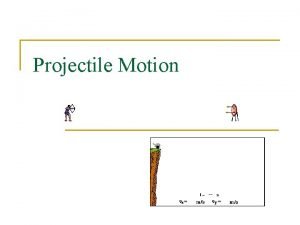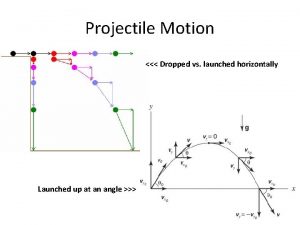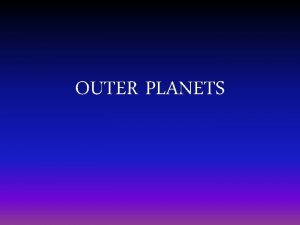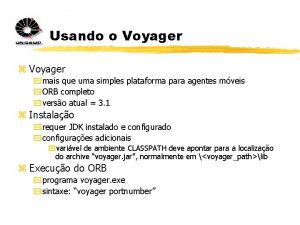Voyager Exploration Voyager 1 and 2 Launched 1977







- Slides: 7

Voyager Exploration

Voyager 1 and 2 • • Launched 1977 Sent to explore Jupiter & Saturn Have moved on to Neptune and Pluto Currently past Pluto

Symphony of the Planets • sound does not travel through interplanetary space in the same way that it carries in Earth’s atmosphere • outer space being virtually devoid of atmosphere • electromagnetic vibration in plasma ejected by the Sun • Voyager space probes record the interaction between the solar wind and the magnetosphere of various planets and moons in the Solar System • interaction results in vibration within the range of 20 Hz to 20 k. Hz, which is also the range of human hearing. When returned to Earth these field recordings are made audible, allowing us to hear the distinctive sounds that planets and moons generate in the solar weather.


Voyager Discoveries Erupting volcanoes on Jupiter's moon Io, 100 times more volcanic than Earth Indication of ocean beneath the cracked icy crust of Jupiter's moon Europa A deep, smoggy nitrogen atmosphere on Saturn's moon Titan, likely having clouds and rain of methane Complex and diverse surfaces of frozen moons shaped by icy volcanism and faults Neptune's Great Dark Spot and 1, 600 kilometer-per-hour winds (1, 000 miles per hour) Geysers erupting from the polar cap Neptune's moon Triton at -390 degrees Fahrenheit The termination shock where the supersonic solar wind


Golden Record • 118 photographs of Earth • 90 minutes of the world's greatest music • an audio essay entitled Sounds of Earth (featuring everything from burbling mud pots to barking dogs to a roaring Saturn 5 liftoff) • greetings in 55 human languages and one whale language • the brain waves of a young woman in love • and salutations from the secretary general of the United Nations • assembled as a message to possible extraterrestrial civilizations that might encounter the spacecraft • won't come within a few light years of another star for some 40, 000 years













